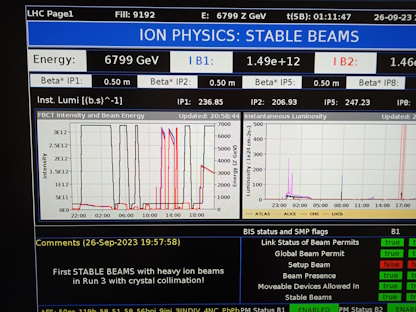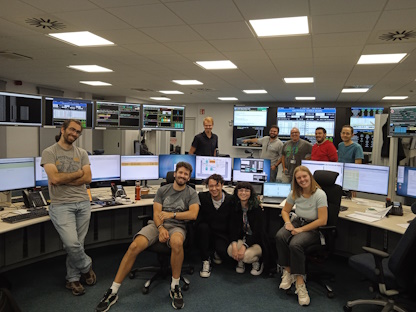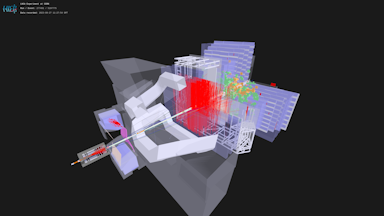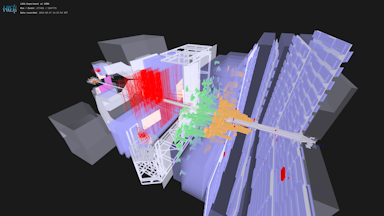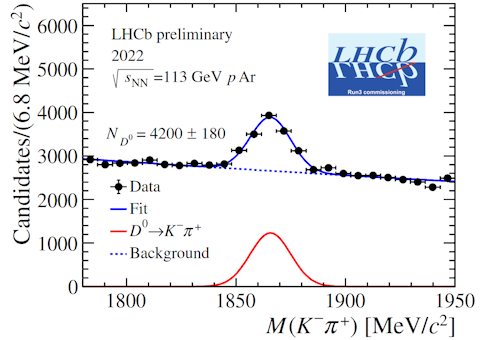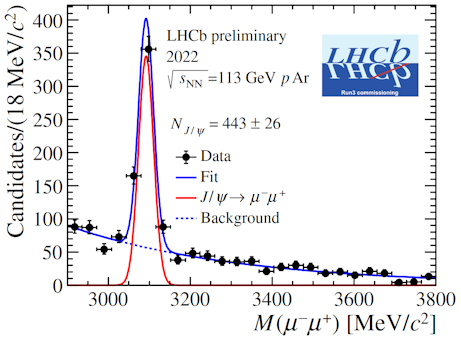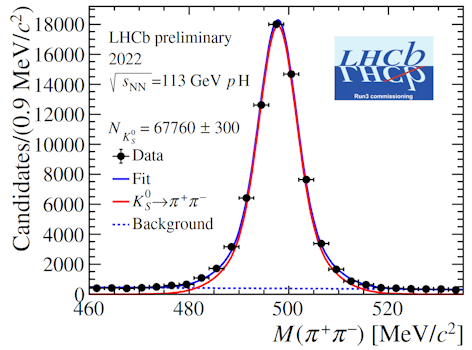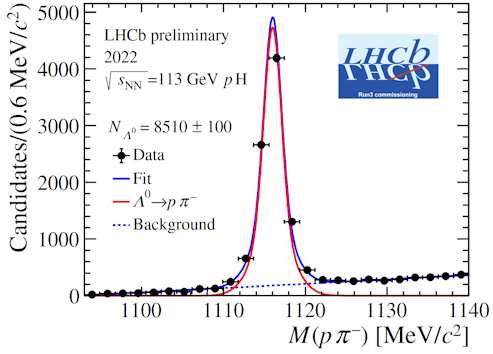The 2023 data-taking period ended this morning at 4 am. This year LHCb started taking data on April 14 with proton-proton collisions and ended today with lead-lead heavy ion collisions. This was the longest run with lead ions in the LHC and it was also the first one after five years.
Lead ions are large nuclei composed of substantial number of protons and neutrons. When they collide at the LHC energy, a huge amount of energy density is involved. This energy may be sufficient to create the so-called quark-gluon plasma, i.e., a state of matter in which quarks and gluons can move freely instead of being bound inside hadrons. Physicists are convinced that the Universe was in such a state shortly after the Big Bang. The study of quark-gluon plasma is therefore important for understanding not only quark-gluon interactions in quantum chromodynamics (QCD), but also the evolution of the Universe.
Lead-lead collision data were recorded by all four experiments at the LHC during this run. LHCb plays a very special and interesting role in this investigation. Unique forward geometry and very good particle identification allow LHCb to constrain some specific theoretical models in a complementary way with respect to other experiments. In addition, LHCb has the unique capability of injecting gases into the LHC beam pipe using the SMOG2 system, allowing at the same time proton-proton and proton-gas (or lead-lead and lead-gas) collision data to be recorded. The collisions involving stationary gas (with respect to the LHCb detector), are called fixed-target collisions by physicists. LHCb is the only LHC experiment able to operate in a fixed-target mode. The image shows the unique kinematic acceptance at LHCb compared to other experiments.
Lead-lead collisions started approximatively a month ago as visible in the LHC control screen shown in the upper left image. The picture at the right, taken at about the same, shows some of the physicists present in the LHCb control room during data taking. The event displays show different views of lead-lead ion collisions recorded by the LHCb detector.
SMOG2 is an upgraded system prepared for Run 3. It is a dedicated cell for gas injection located just before the VErtex LOcator (VELO). It can run in parallel with proton-proton or lead-lead collisions at LHCb. It is equipped with a sophisticated Gas Feed System that allows the injection of several different gas species, as H2, D2, Ar, Kr, Xe, He, Ne, N2 and O2.
The four images demonstrate the SMOG2 potential. The two above show excellent D0 and J/ψ yields from just 18 minutes of pAr data taking in 2022 and the two below Ks0 and Λ yields from 21 minutes of pH2 data taking. This was the first hydrogen gas injection marking a major milestone for the SMOG2 physics programme and enabling many more measurements in the forthcoming future. The LHCb collaboration is now looking forward to obtaining excellent physics results from this year’s lead-lead and lead-argon data.

